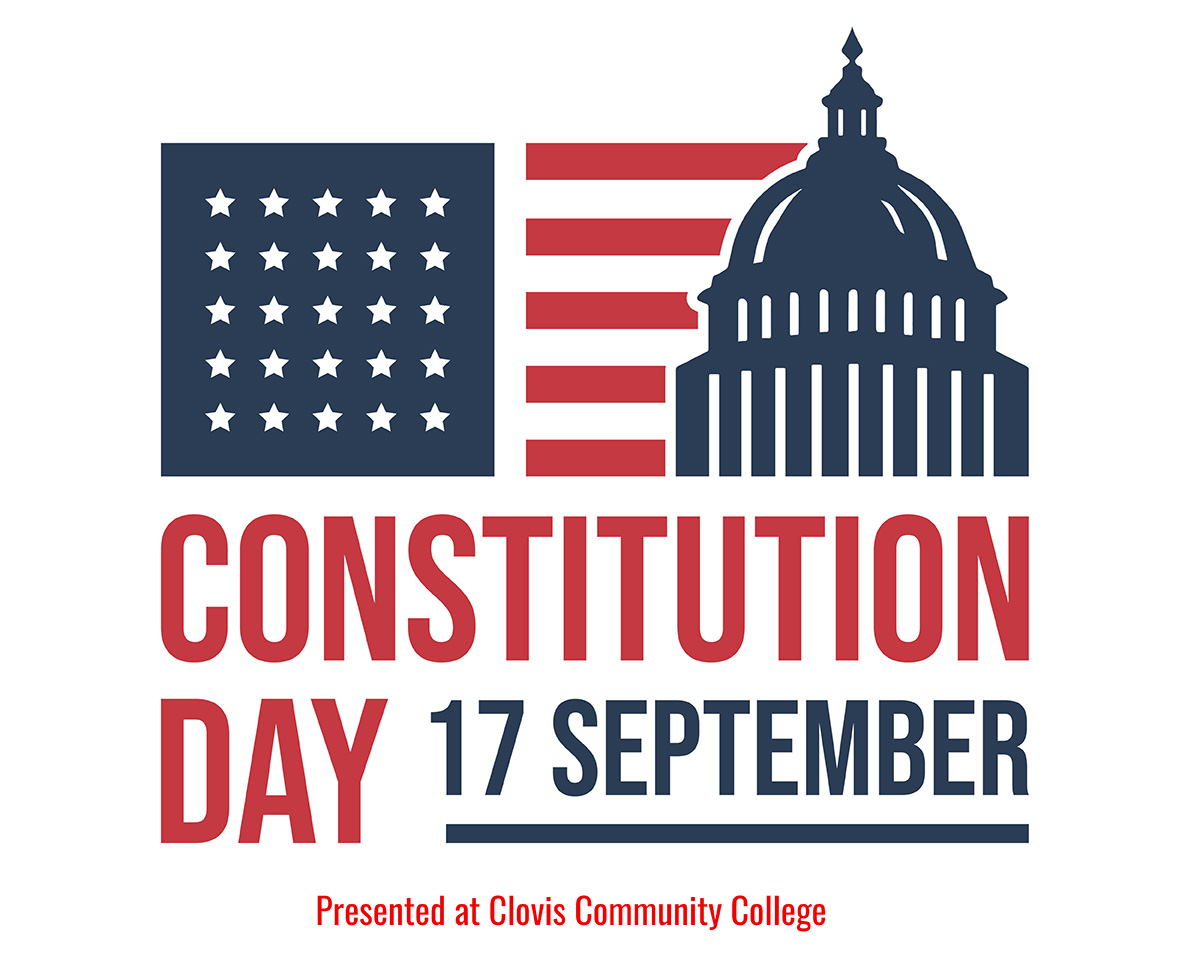Constitution Day 2021
Constitution Day, September 17th, is an American federal observance that recognizes the adoption of the United States Constitution and those who have become U.S. citizens. It is normally observed on September 17, the day in 1787 that delegates to the Constitutional Convention signed the document in Philadelphia. In addition to creating Constitution Day (on the day that had formerly been known as Citizenship Day), the act requires that any educational institution that receives federal funds holds an educational program on the Constitution.
 Adopted on September 17, 1787, by the Constitutional Convention in Philadelphia, PA
Adopted on September 17, 1787, by the Constitutional Convention in Philadelphia, PA
The Constitution of the United States of America is the supreme law of the United States. It is the foundation and source of the legal authority underlying the existence of the United States of America and the Federal Government of the United States. It provides the framework for the organization of the United States Government. The document defines the three main branches of the government: The legislative branch with a bicameral Congress, an executive branch led by the President, and a judicial branch headed by the Supreme Court. Besides providing for the organization of these branches, the Constitution outlines obligations of each office, as well as provides what powers each branch may exercise. It also reserves numerous rights for the individual states, thereby establishing the United States' federal system of government.
The U.S. Bill of Rights
On September 25, 1789, Congress transmitted to the state Legislatures twelve proposed amendments to the Constitution. Numbers three through twelve were adopted by the states to become the United States (U.S.) Bill of Rights, effective December 15, 1791.James Madison proposed the U.S. Bill of Rights. It largely responded to the Constitution's influential opponents, including prominent Founding Fathers, who argued that the Constitution should not be ratified because it failed to protect the basic principles of human liberty. The U.S. Bill of Rights was influenced by George Mason's 1776 Virginia Declaration of Rights, the 1689 English Bill of Rights, works of the Age of Enlightenment pertaining to natural rights, and earlier English political documents such as the Magna Carta (1215).Two additional articles were proposed to the States; only the final ten articles were ratified quickly and correspond to the First through Tenth Amendments to the Constitution. The first Article, dealing with the number and apportionment of U.S. Representatives, never became part of the Constitution. The second Article, limiting the ability of Congress to increase the salaries of its members, was ratified two centuries later as the 27th Amendment. Though they are incorporated into the document known as the "Bill of Rights", neither article establishes a right as that term is used today. For that reason, and also because the term had been applied to the first ten amendments long before the 27th Amendment was ratified, the term "Bill of Rights" in modern U.S. usage means only the ten amendments ratified in 1791. The United States Bill of Rights plays a central role in American law and government, and remains a fundamental symbol of the freedoms and culture of the nation. One of the original fourteen copies of the U.S. Bill of Rights is on public display at the National Archives in Washington, D.C.
Click Here To Read the Bill of Rights!
Additional Links
- Link to Constitution Day Official Facebook Page
- The Amendments to the U.S. Constitution
- The Founding Fathers
LIFE. LIBERTY. FREEDOM. PROSPERITY
Financial Aid
- Apply for Financial Aid
- Recently Graduated High School or HSE students
- Aplique a Ayuda Económica
- Additional Resources
- Satisfactory Academic Progress (SAP)
- Payment Information
- Cost of Attendance
- Priority Dates
- Financial Aid Forms
- FAFSA Resource Videos
- Loan Resource Videos
- Student Loan Success Guide
- Frequently Asked Questions
- Grants
Scholarships
Veterans and Active Military
